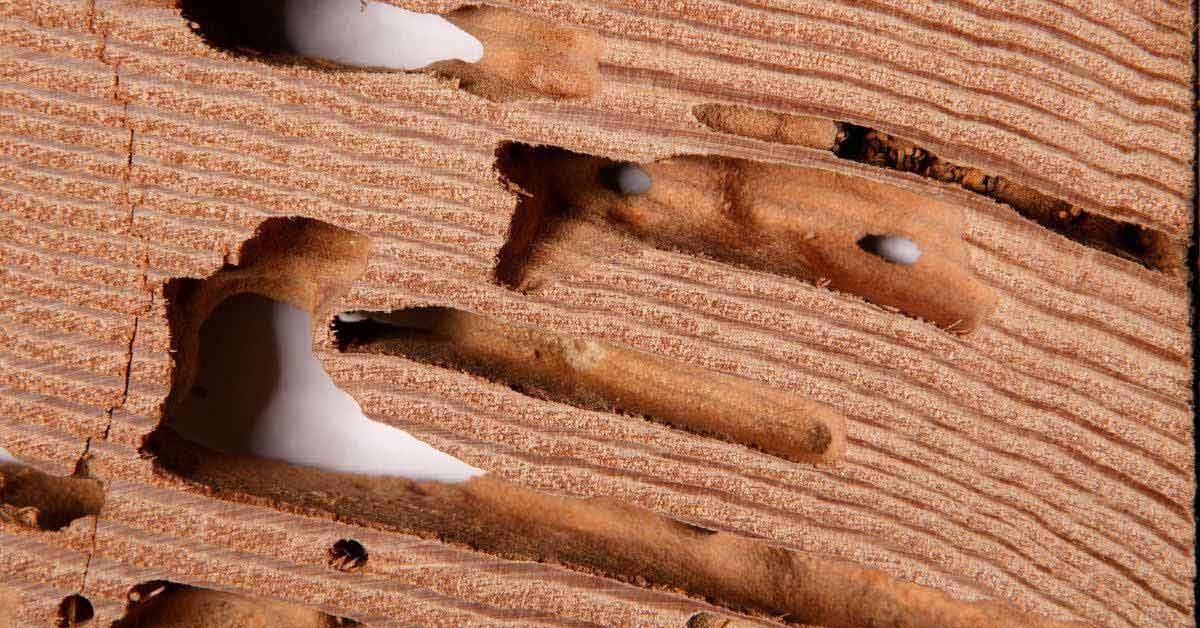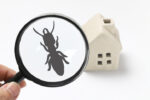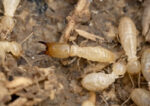
How to Get Rid of Drywood Termites In Florida
If you think you’ve seen the signs of these destructive pests, you urgently need to know how to get rid of drywood termites. Termites cause billions of dollars in damage to structures every year, and homeowner’s insurance policies usually don’t cover the costly repairs and treatments you need to get your home back to normal.
Homeowners who want to know if they’ve got these insects can look for the telltale signs of these pests. One strong indication of these bugs is the presence of little wood dust-like pellets called “frass.” Frass refers to the small, six-sided feces pellets that the bugs kick out of their nest. The color of frass ranges from black to light brown and resembles coffee grounds or sawdust.
Finally, they “swarm” in late spring or summer, meaning that the winged alates leave the colony to attempt to establish their own. You may notice discarded wings near light sources like windows or light fixtures. However, you’ll only notice this sign if the colony is mature enough to have winged alates.
We have reason to worry about these pests in areas like Boca Raton, Delray Beach, West Palm Beach, Palm Beach Gardens, Jupiter, Port St. Lucie, and Fort Pierce and throughout South Florida. All three termite types — drywood, subterranean, and dampwood — are present in Florida, but drywood termites are drawn to coastal areas in the southern part of the state. They prefer tropical climates with lots of wooden structures. That means that South Florida homeowners need to have these destructive pests on their radar.
How do you get rid of drywood termites? Find out from the drywood termite experts at Hulett. Whether you need to know how to get rid of drywood termites in furniture or your home’s structure, we have you covered with effective termite control solutions.
READ THE GUIDE: The State of Florida Department of Agriculture and Consumer Services has written a guide for homeowners on residential drywood termite infestations.
What Are Drywood Termites?
These social insects feed on drywood and live in colonies. They usually build their nests inside the wood, and these colonies are smaller than those of subterranean termites. However, they often go overlooked, so their damage can accumulate and become severe. These termite settlements are comprised of soldiers, workers, and reproductives.
These pests don’t build mud tubes like some subterranean termite species. They don’t need contact with the soil to thrive, so they don’t require tunnels to lead them to an underground nest. The insects commonly nest inside wood in hidden places around a home or property. Within months of establishing a colony, they’re capable of causing significant structural damage, but their colonies can take years to become mature. If the colony matures and produces winged alates, they can establish new colonies in different home areas when they swarm in the warmer months. As a result, multiple, simultaneous drywood colonies can cause significant structural damage.
Identifying Drywood Termites In Florida
Drywood termites contain soldiers, reproductives, and workers. Let’s examine each group’s characteristics to help you identify them.
Soldiers
- Three-eighths of an inch in length
- Pale brown or yellowish-tan to dark brown color, depending on the species
- Unusually large mandibles
Alates
- One-half inch long
- Gray or clear wings
- Pale brown or yellowish-tan to dark brown color, depending on the species.
Workers
- Worker termites are small, wingless insects that are cream in color
- They are around one-eighth of an inch long
- Responsible for finding food for the colony and feeding the colony
- Responsible for taking care of the young
The most distinguishable physical feature of drywood termites is the soldiers’ large mandibles. They may be wider than the bug’s head and are much larger than soldiers from other termite species. However, most people have never seen a soldier of any termite species, making identification based on this characteristic extremely difficult for the average homeowner. The presence of frass near wood around your home is a more reliable indicator of an infestation.
The treatments for a drywood termite infestation differ from other termites, so correctly identifying the pests is critical. It’s better to leave positive identification to an experienced pest control professional.
How to Kill Drywood Termites
If you have spotted drywood termites in your home, you may be worried that you and your family will have to relocate temporarily for tent fumigation. This treatment can be disruptive and inconvenient. The soil-based methods for eliminating subterranean termites won’t work on these pests.
Fortunately, there is an effective and convenient option for treating drywood termites. Technicians can eliminate these pests by directly injecting a termite control product into the galleries. The insects come into contact with it and transfer it to other colony members. The treatment kills these pests and eventually eliminates the queen.
In addition to having access to highly effective products like this one, licensed termite control technicians can design a unique solution for the infestation in your home. They have the know-how to figure out how and why the pests are entering your home and can advise you on steps to prevent it from happening again. For example, they may suggest that you seal any cracks, crevices, or holes in your home’s exterior, and limit exterior lighting during swarm season.
When it comes to your most valuable asset, your home, termite elimination is to contact a professional termite control company like Hulett.
Frequently Asked Questions About Drywood Termites In Florida
Homeowners often panic when they see termites in their homes. At Hulett, we seek to answer all their questions and reassure them that they can take back their home from these insect invaders. We’ve responded to some of the most common drywood termite questions they have below.
What Kind of Damage Can Drywood Termites Do?
These insects feed on cellulose, which is the material in wood that accounts for its strong structural resistance. A mature drywood termite colony can eat as much as a cubic foot of wood over a year. That’s a lot of wood to remove from your home’s structure.
Hulett: Experienced Drywood Termite Control Professionals
We’ve been serving Boca Raton, Delray Beach, West Palm Beach, Palm Beach Gardens, Jupiter, Port St. Lucie, and Fort Pierce and all other South Florida communities for over 50 years, and during that time, we’ve seen many drywood termite infestations. As a family-owned business, we don’t like disrupting families from their daily lives with tent fumigation. That’s why we offer Hulett’s no tent termite treatment. It can help you quickly and effectively kill these bugs with minimal fuss.
Treatments like this are just one of the many benefits of our internal training program through Bugs University. We educate our technicians on the latest products and methods for killing these fast-adapting pests. When you’ve got a termite infestation, don’t delay. You’ll feel so relieved when you call Hulett for a free inspection today.




